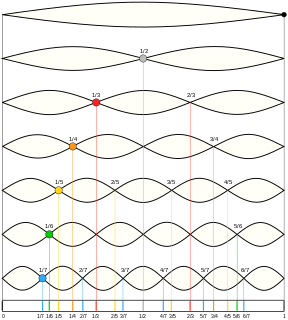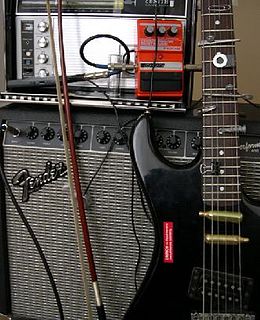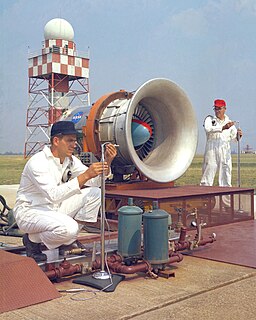
A musical ensemble, also known as a music group or musical group, is a group of people who perform instrumental or vocal music, with the ensemble typically known by a distinct name. Some music ensembles consist solely of instruments, such as the jazz quartet or the orchestra. Some music ensembles consist solely of singers, such as choirs and doo wop groups. In both popular music and classical music, there are ensembles in which both instrumentalists and singers perform, such as the rock band or the Baroque chamber group for basso continuo and one or more singers. In classical music, trios or quartets either blend the sounds of musical instrument families or group together instruments from the same instrument family, such as string ensembles or wind ensembles. Some ensembles blend the sounds of a variety of instrument families, such as the orchestra, which uses a string section, brass instruments, woodwinds and percussion instruments, or the concert band, which uses brass, woodwinds and percussion.
Subtractive synthesis is a method of sound synthesis in which partials of an audio signal are attenuated by a filter to alter the timbre of the sound. While subtractive synthesis can be applied to any source audio signal, the sound most commonly associated with the technique is that of analog synthesizers of the 1960s and 1970s, in which the harmonics of simple waveforms such as sawtooth, pulse or square waves are attenuated with a voltage-controlled resonant low-pass filter. Many digital, virtual analog and software synthesizers use subtractive synthesis, sometimes in conjunction with other methods of sound synthesis.

A harmonic is any member of the harmonic series. The term is employed in various disciplines, including music, physics, acoustics, electronic power transmission, radio technology, and other fields. It is typically applied to repeating signals, such as sinusoidal waves. A harmonic of such a wave is a wave with a frequency that is a positive integer multiple of the frequency of the original wave, known as the fundamental frequency. The original wave is also called the 1st harmonic, the following harmonics are known as higher harmonics. As all harmonics are periodic at the fundamental frequency, the sum of harmonics is also periodic at that frequency. For example, if the fundamental frequency is 50 Hz, a common AC power supply frequency, the frequencies of the first three higher harmonics are 100 Hz, 150 Hz, 200 Hz and any addition of waves with these frequencies is periodic at 50 Hz.
An nth characteristic mode, for n > 1, will have nodes that are not vibrating. For example, the 3rd characteristic mode will have nodes at
L and
L, where L is the length of the string. In fact, each nth characteristic mode, for n not a multiple of 3, will not have nodes at these points. These other characteristic modes will be vibrating at the positions
L and
L. If the player gently touches one of these positions, then these other characteristic modes will be suppressed. The tonal harmonics from these other characteristic modes will then also be suppressed. Consequently, the tonal harmonics from the nth characteristic modes, where n is a multiple of 3, will be made relatively more prominent.

An overtone is any frequency greater than the fundamental frequency of a sound. Using the model of Fourier analysis, the fundamental and the overtones together are called partials. Harmonics, or more precisely, harmonic partials, are partials whose frequencies are numerical integer multiples of the fundamental. These overlapping terms are variously used when discussing the acoustic behavior of musical instruments. The model of Fourier analysis provides for the inclusion of inharmonic partials, which are partials whose frequencies are not whole-number ratios of the fundamental.

String instruments, stringed instruments, or chordophones are musical instruments that produce sound from vibrating strings when the performer plays or sounds the strings in some manner.

In music, timbre is the perceived sound quality of a musical note, sound or tone. Timbre distinguishes different types of sound production, such as choir voices and musical instruments, such as string instruments, wind instruments, and percussion instruments. It also enables listeners to distinguish different instruments in the same category.
Throughout history, various methods of musical instrument classification have been used. The most commonly used system divides instruments into string instruments, woodwind instruments, brass instruments and percussion instruments; however, other schemes have been devised.

A mute is a device fitted to a musical instrument to alter the sound produced: by affecting the timbre, reducing the volume, or most commonly both. The use of a mute is usually indicated in musical notation by the Italian direction con sordino and removed with the direction senza sordino or via sordino.

In music for bowed string instruments, col legno, or more precisely col legno battuto, is an instruction to strike the string with the stick of the bow, rather than by drawing the hair of the bow across the strings.

In music, extended technique is unconventional, unorthodox, or non-traditional methods of singing or of playing musical instruments employed to obtain unusual sounds or timbres.

The Symphony No. 15 in A major, Op. 141, Dmitri Shostakovich's last, was written in a little over a month during the summer of 1971 in Repino, outside St. Petersburg. It was first performed in Moscow on 8 January 1972 by the All-Union Radio and Television Symphony Orchestra under Maxim Shostakovich.
Robert Erickson was an American composer.
In music, a drone is a harmonic or monophonic effect or accompaniment where a note or chord is continuously sounded throughout most or all of a piece. The word drone is also any part of a musical instrument that is used to produce such an effect, as is the archaic term burden such as a "drone [pipe] of a bagpipe", the pedal point in an organ, or the lowest course of a lute. Α burden is also part of a song that is repeated at the end of each stanza, such as the chorus or refrain.
A spectral glide is a music-composition concept, consisting of a "modification of the vowel quality of a tone". Since the vowel quality of a tone is determined by the overtones, spectrum, or timbre of that tone, a spectral glide is a move from a spectrum characteristic of one vowel to a spectrum characteristic of another vowel. A spectral glide may be accomplished through a wah-wah, mute, or pedal, or through the modification of one's vocal tract while speaking, singing, or playing an instrument such as the didgeridoo. Lip-vibrated instruments with large mouthpieces such as tuba and trombone allow extensive modification of vowel quality, while woodwinds have a smaller range, with the exception of the flute in air-sound mode. Strings have the smallest range.

The Symphony No. 3 in C major, Op. 52, by Jean Sibelius is a symphony in three movements composed in 1907. Coming between the romantic intensity of Sibelius's first two symphonies and the more austere complexity of his later symphonies, it is a good-natured, triumphal, and deceptively simple-sounding piece. The symphony's first performance was given by the Helsinki Philharmonic Society, conducted by the composer, on 25 September 1907. In the same concert, his suite from the incidental music to Belshazzar's Feast, Op. 51, was also performed for the first time.
The jiaohu is a Chinese bowed string instrument in the huqin family of musical instruments. Although very similar to the Jinghu and Ehru in physical structure, the Jiaohu is a traditional Chinese instrument. It is a small two-stringed fiddle-like instrument that requires a bow in order to produce its sound. Its sound box is made from the horn of a cow. The open front end of the sound box is covered with snake skin. As with many of the diverse instruments in China, many Huqin stringed instruments were used in feudal times to accentuate traditions, festivals, rituals, and court life. Chinese operas, especially in Beijing, required the use of elegant music and instruments, thus many woodwinds, drums, and stringed instruments including the Jiaohu were used in ensembles to give operas more emotional meaning.It has two strings and its sound box is made from the horn of a cow. The open front end of the sound box is covered with snake skin. The instrument is used primarily by the Gelao people of the southern Chinese province of Guangxi.
The instrument's name is derived from the Chinese words jiǎo and hú .

An experimental musical instrument is a musical instrument that modifies or extends an existing instrument or class of instruments, or defines or creates a new class of instrument. Some are created through simple modifications, such as cracked drum cymbals or metal objects inserted between piano strings in a prepared piano. Some experimental instruments are created from household items like a homemade mute for brass instruments such as bathtub plugs. Other experimental instruments are created from electronic spare parts, or by mixing acoustic instruments with electric components.

Toot, Whistle, Plunk and Boom is an educational Adventures in Music animated short film produced by Walt Disney Productions, and originally released to theaters by RKO Radio Pictures on November 10, 1953. A sequel to the first Adventures in Music cartoon, the 3-D short Melody, Toot, Whistle, Plunk and Boom is a stylized presentation of the evolution of the four orchestra sections over the ages with: the brass ("toot"), the woodwind ("whistle"), the strings ("plunk"), and the percussion ("boom").
Woodwind growling is a musical technique where the instrumentalist vocalizes into the instrument to alter quality of the sound. Growling is used primarily in rock and blues style playing, it is also frequently used in klezmer music; it is popular in the woodwind family of instruments, especially the saxophone. It is commonly used by mainstream artists such as Ben Webster, Illinois Jacquet and Earl Bostic. Outside of these styles and instruments, it is often considered a novelty effect.

Music technology is the use of any device, mechanism, machine or tool by a musician or composer to make or perform music; to compose, notate, play back or record songs or pieces; or to analyze or edit music. The earliest known applications of technology to music was prehistoric peoples' use of a tool to hand-drill holes in bones to make simple flutes. Ancient Egyptians developed stringed instruments, such as harps, lyres and lutes, which required making thin strings and some type of peg system for adjusting the pitch of the strings. Ancient Egyptians also used wind instruments such as double clarinets and percussion instruments such as cymbals. In Ancient Greece, instruments included the double-reed aulos and the lyre. Numerous instruments are referred to in the Bible, including the horn, pipe, lyre, harp, and bagpipe. During Biblical times, the cornet, flute, horn, organ, pipe, and trumpet were also used. During the Middle Ages, music notation was used to create a written record of the notes of plainchant melodies.
















